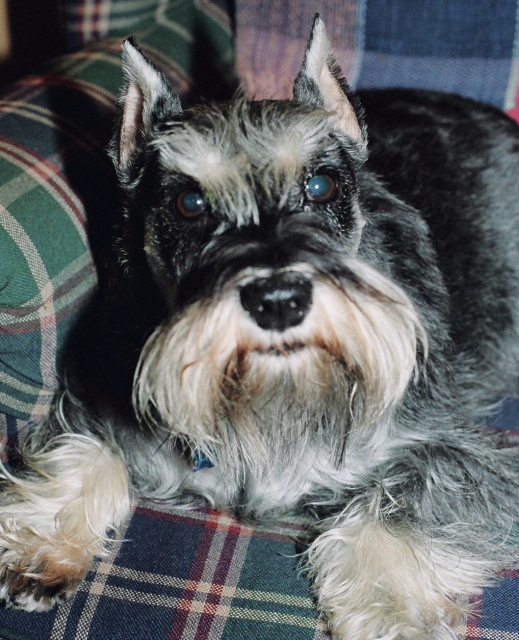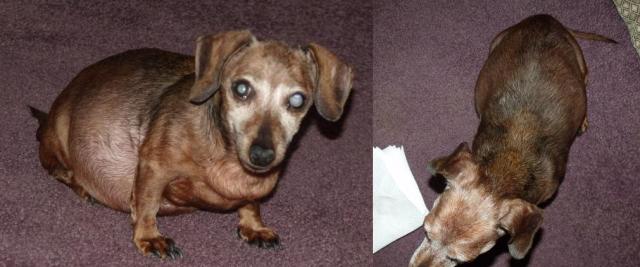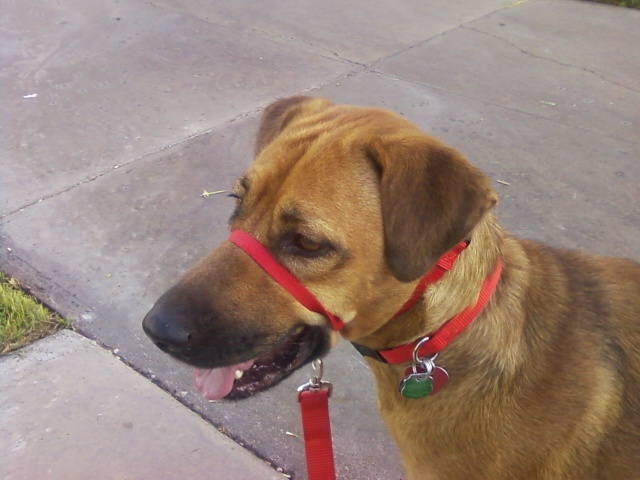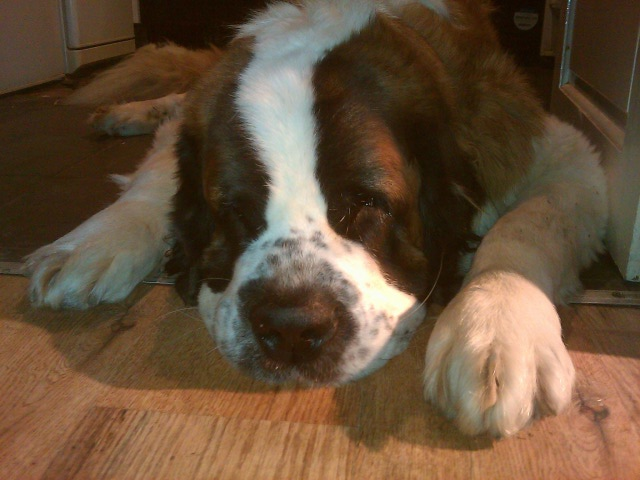QuestionThis is primarily about a problem with our indoor dogs, but we also have two Lab/Weimerimer's on our 7 acres that refuse to stop barking at night maybe you could give us help with that also.
**I have two dachshunds who were house broke and could be left for at least 8 hours without accidents (unless ill etc., one is 13 years old and the other is three).When I began working again my hour's overlaped with my husbands so that he would be able to come home first and would take care of the dogs. Briefly... he didn't always come home on time, then when there was an accident he wouldn't clean it up or would not clean it up appropriately. He did make sure the house always smelled good. My field of work is very stressful and requires constant crisis (life/death)issues, and I was exhausted when I came home and didn't realize how bad things were getting, until there wasn't a spot in the house damaged.
Plus, we added another puppy. I've stripped out majority of carpet because even the strongest neutralizers didn't help. But, how on earth do I get the dogs retrained? I've tried to confine them in a specific room for months. I am living with concrete till I can trust them. So far nothing works. I have taken a long hiatus from my profession and made sure they go out frequently... but still have problems. What can I do?? I would really like to have a floor again, and am starting my own business. **We have fake french doors that that can't be adapted for dog doors. Help...puppy is almost a year old.
AnswerWith 3 dogs that were forced into bad habits, correcting housebreaking may be difficult and time consuming. Much of what I have made work involves crates. It is essential to restrict the dog to a small area when you are not available. Older dogs may adjust to being on tie downs better, just a simple, short chain one with one end secured, and a snap at the other end.
To save myself time and make sure I don't leave anything out, I am pasting in material meant for younger dogs. You need to do about the same thing with the older dogs, mainly the timing is different. As I write this, my 7 week old is sleeping in the bathroom. As soon as she wakes up and takes a drink, I will need to take her out. Older dogs are not that easy. Three older dogs at once will be very hard to watch as carefully as you need to and accomplish much else at all. You may need to work at everybody out every few hours. Quite often when one dogs wants to go out, all the rest think they need to go too.
Housebreaking starts before you get home with the new puppy. If you don't have
a crate, buy one. I prefer the more enclosed, den like plastic ones. Skip the
bedding. At first it gets wet, and later it can be chewed into choking
hazards. A wire rack in the bottom will help keep the puppy up out of
accidents at first. They are available with the crates, but a piece of closely
spaced wire closet shelving from a home supply place is cheaper. If you
already have a metal crate, covering it may help. Just make sure you use
something the puppy can't pull in and chew. Dogs that start out in crates as
little puppies, accept them very well. Never leave an unattended puppy loose
in the house. If nobody can watch it, put it in the crate. I suggest letting
the dog have its crate all its life.
Choose a command and spot you want it to use. The less accessible to strays,
the less chance of serious disease. If it is a female, choosing a
non grassy spot will avoid brown spots later. When you bring it home, take it
to the spot and give it the command in a firm, but friendly voice. Keep
repeating the command and let the puppy sniff around. If it does anything,
praise it. Really let it know what a good dog it is and how much you love it,
and maybe a treat. Note, being out there not only means you can praise it,
but it also keeps it from being snatched by a hawk. If it doesn't go, take it
inside and give it a drink and any meals scheduled. A young puppy will need to
go out immediately afterward. Go to the spot and follow the above routine.
Praising it if it goes is extremely important. If it doesn't go, take it back
inside and put it in its crate and try again soon. Do not let it loose in the
house until it does go.
At first it is your responsibility to know and take the puppy out when it
needs to go. It needs to go out the first thing in the morning, after eating,
drinking, and sleeping. If it quits playing, and starts running around
sniffing, it is looking for a place to go. Take it out quickly. You will just
have to be what I call puppy broke until it is a little older.
By the time most dogs are about 3 months old, they have figured out that if
they go to the door and stand, you will let them out. The praise slowly shifts
to going to the door. Some people hang a bell there for the dog to paw. If
your dog doesn't figure this out, try praising it and putting it out if it
even gets near the door. A stern "Bad dog!" is all the punishment that is
effective, and only when you catch it in the act and are sure you didn't miss
it going to the door. Clean up accidents promptly. I mostly keep the little
puppies out of the carpeted rooms. Still I need the can of carpet foam
sometimes. First blot up all the urine you can with a dry towel. Keep moving
it and stepping on it until a fresh area stays dry. A couple big putty knives
work well on bowel movements. Just slide one under it while holding it with
the other. This gets it up with a minimum of pushing it down into the carpet.
This works with even relatively soft ones, vomit, dirt from over turned house
plants, or anything else from solids to thick liquids. Finish up with a good
shot of carpet foam. Note, do not let the puppy lick up the carpet foam.
The only real solution is to crate the dog when you aren't around. The dog may be happier in its den than loose in the house. It relaxes, it feels safe in its den. It rests, the body slows down reducing the need for water and relieving its self. Dogs that have been crated all along do very well. Many of them will rest in their crates even when the door is open. I think the plastic ones give the dog more of a safe, enclosed den feeling. Metal ones can be put in a corner or covered with something the dog can't pull in and chew. Select a crate just big enough for the full grown dog to stretch out in.
Leave it some toys. Perhaps a Kong filled with peanut butter. Don't leave
anything in the crate the dog might chew up. It will do fine without even any
bedding. You will come home to a safe dog and a house you can enjoy.
A dog that has not been crated since it was little, make take some work.
Start out just putting its toys and treats in the crate. Praise it for going
in. Feed it in the crate. This is also an easy way to maintain order at
feeding time for more than one dog.
The "shut the puppy in a safe room" is a fallacy. Very few houses even have a
safe room. How many of us have a room with a hard surfaced floor and nothing
else? Most rooms have electrical cords to chew if nothing else. In addition
to destroying anything a bored puppy finds to chew, it may choke or have
intestinal blockage from the pieces. I had a friend that left her dog in a
"safe" room. It ate a hole in the floor covering. The safe rooms fail to
give the dog the comfort of the enclosed space their instinct requires. Nor
do they restrict activity extending the time the dog can go without relieving
itself.
I did without a dog for a few year over the issue of barking at night. Again my solution to that, is the crate. Bring the dogs in at night and let them sleep in a crate. Lab/Weims will take at least a Large, 36'' crate. 5 crates will take up a lot of room. I thought my friend was joking about having them stacked 3 deep in her living room until I visited her house. Labs in the bottom, and Cairn Terriers on top.
Many people strongly strongly push cleaning up all evidence of past accidents. I am slower to suggest that. Dogs will return top the same spot if they can find it. When you see one sniffing the spot, that is your clue to run it out. Still, with bare concrete, you may want to eliminate as much as possible. I would go with bleach and peroxide, letting it soak down into the pores where odor may linger. Have you tried the enzyme cleaners such as Nature's Own?
None of this will work very well with so many dogs unless you are firmly established as top dog. The dogs see all the
people and dogs in the household as a pack with each having their own rank in
the pack and a top dog. Life is much easier if the 2 legged pack members
outrank the 4 legged ones. You can learn to play the role of top dog by
reading some books or going to a good obedience class. A good obedience class
or book is about you being top dog, not about rewarding standard commands with
a treat. Start at http://www.dogsbestfriend.com/

 Miniature Schnauzer Flaky Skin
Question
Cicero
My 7-year-old miniature schnauzer Cicer
Miniature Schnauzer Flaky Skin
Question
Cicero
My 7-year-old miniature schnauzer Cicer
 Older dog with distended stomach.
Question
Belle
Hi, my 14 year old miniature dachshund,
Older dog with distended stomach.
Question
Belle
Hi, my 14 year old miniature dachshund,
 My dog Kiya
Question
Kiya
My new dog Kiya is a 2 yr old German Shep
My dog Kiya
Question
Kiya
My new dog Kiya is a 2 yr old German Shep
 Pinched nerve
Question
Agustus Tybierius vonG
My 4 y/o, intact male G
Pinched nerve
Question
Agustus Tybierius vonG
My 4 y/o, intact male G
 st bernard archy.
QuestionQUESTION: I have a four year old st bernard. I
st bernard archy.
QuestionQUESTION: I have a four year old st bernard. I